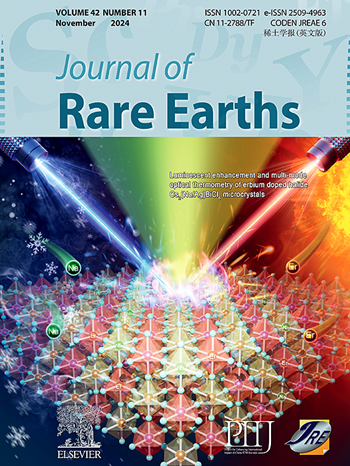Sea urchin-like NiPt/TiCeO2 catalyst for rapid and efficient hydrogen production from hydrous hydrazine
IF 7.2
1区 化学
Q1 CHEMISTRY, APPLIED
引用次数: 0
Abstract
Controllable hydrogen production via the catalytic decomposition of hydrous hydrazine (N2H4·H2O) holds significant promise for mobile and portable applications. However, current catalysts suffer from unsatisfactory reaction activity and hydrogen (H2) selectivity. Based on the unique redox properties of CeO2, this article aims to enhance the thermal catalytic performance for the decomposition of N2H4·H2O by improving metal-support interactions between the TiCeO2 and NiPt active components. Meanwhile, the sea urchin-like TiCeO2 support, which is more conducive to the dispersion of the NiPt nanoparticles and provides more reactive sites for the reaction, was used to immobilize Ni-Pt into the NixPt1‒x/TiCeO2 sample using the impregnation-reduction method. By modulating Ce doping and the Ni-Pt molar ratio, samples with different Ni-Pt compositions were synthesized. The optimal Ni0.5Pt0.5/TiCeO2 (nNi: nPt = 1) shows the highest catalytic performance compared with the other samples, with a TOF (turnover frequency) of 212.58 min−1 and 100% hydrogen selectivity at 323 K. Furthermore, the hydrogen selectivity remains 100% after six cycles. This remarkable activity and stability provide valuable insights and encouragement for accelerating the practical application of N2H4·H2O as a viable hydrogen carrier.

海胆样NiPt/TiCeO2催化剂用于水合肼快速高效制氢
通过催化分解水合肼(N2H4·H2O)的可控制氢技术在移动和便携式应用中具有重要的前景。然而,目前的催化剂的反应活性和氢(H2)选择性不理想。基于CeO2独特的氧化还原性能,本文旨在通过改善TiCeO2与NiPt活性组分之间的金属-载体相互作用来增强对N2H4·H2O分解的热催化性能。同时,采用浸渍还原法将Ni-Pt固定在NixPt1-x /TiCeO2样品中,采用海胆样TiCeO2载体更有利于NiPt纳米颗粒的分散,为反应提供更多的反应位点。通过调节Ce掺杂和Ni-Pt摩尔比,合成了具有不同Ni-Pt成分的样品。与其他样品相比,最佳的Ni0.5Pt0.5/TiCeO2 (nNi: nPt = 1)表现出最高的催化性能,在323 K时,TOF(周转频率)为212.58 min−1,氢选择性为100%。6次循环后,氢的选择性仍为100%。这种显著的活性和稳定性为加速N2H4·H2O作为可行的氢载体的实际应用提供了有价值的见解和鼓励。
本文章由计算机程序翻译,如有差异,请以英文原文为准。
求助全文
约1分钟内获得全文
求助全文
来源期刊

Journal of Rare Earths
化学-应用化学
CiteScore
8.70
自引率
14.30%
发文量
374
审稿时长
1.7 months
期刊介绍:
The Journal of Rare Earths reports studies on the 17 rare earth elements. It is a unique English-language learned journal that publishes works on various aspects of basic theory and applied science in the field of rare earths (RE). The journal accepts original high-quality original research papers and review articles with inventive content, and complete experimental data. It represents high academic standards and new progress in the RE field. Due to the advantage of abundant RE resources of China, the research on RE develops very actively, and papers on the latest progress in this field emerge every year. It is not only an important resource in which technicians publish and obtain their latest research results on RE, but also an important way of reflecting the updated progress in RE research field.
The Journal of Rare Earths covers all research and application of RE rare earths including spectroscopy, luminescence and phosphors, rare earth catalysis, magnetism and magnetic materials, advanced rare earth materials, RE chemistry & hydrometallurgy, RE metallography & pyrometallurgy, RE new materials, RE solid state physics & solid state chemistry, rare earth applications, RE analysis & test, RE geology & ore dressing, etc.
 求助内容:
求助内容: 应助结果提醒方式:
应助结果提醒方式:


